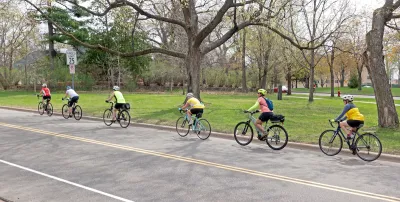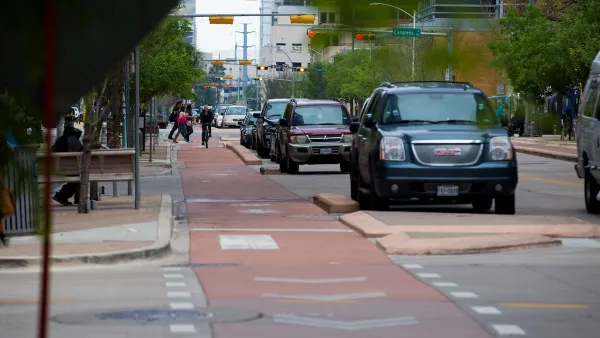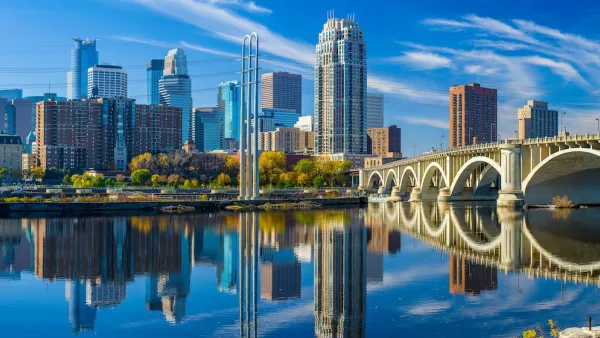Communities around Minneapolis and St. Paul are working to build more robust bike infrastructure networks.

The suburbs of Minneapolis and St. Paul are growing their bike infrastructure networks, thanks in part to state and federal grants. Writing in the Star Tribune, Greta Kaul notes that some suburban areas, such as Ramsey County, are developing their first-ever bike plans.
According to director of the League of American Bicyclists' Bicycle Friendly America program Amelia Neptune, “Suburbs were generally built for cars — often many lanes of them traveling at high speeds — so making them bike-friendly requires a culture shift.” In some places, biking is primarily viewed as recreational; consequently, bike infrastructure is concentrated in areas with nature trails and parks, but doesn’t connect to daily needs like grocery stores.
As Kaul explains, the Metropolitan Council distributes much of the funding for bike infrastructure in the region. “The regional sales tax passed by the Legislature is expected to add roughly $24 million a year to the $15 million in bike and pedestrian infrastructure federal funds distributed annually by the Met Council's Transportation Advisory Board.”
FULL STORY: Twin Cities suburbs aim to expand bike infrastructure

National Parks Layoffs Will Cause Communities to Lose Billions
Thousands of essential park workers were laid off this week, just before the busy spring break season.

Retro-silient?: America’s First “Eco-burb,” The Woodlands Turns 50
A master-planned community north of Houston offers lessons on green infrastructure and resilient design, but falls short of its founder’s lofty affordability and walkability goals.

Delivering for America Plan Will Downgrade Mail Service in at Least 49.5 Percent of Zip Codes
Republican and Democrat lawmakers criticize the plan for its disproportionate negative impact on rural communities.

Test News Post 1
This is a summary

Test News Headline 46
Test for the image on the front page.

Balancing Bombs and Butterflies: How the National Guard Protects a Rare Species
The National Guard at Fort Indiantown Gap uses GIS technology and land management strategies to balance military training with conservation efforts, ensuring the survival of the rare eastern regal fritillary butterfly.
Urban Design for Planners 1: Software Tools
This six-course series explores essential urban design concepts using open source software and equips planners with the tools they need to participate fully in the urban design process.
Planning for Universal Design
Learn the tools for implementing Universal Design in planning regulations.
EMC Planning Group, Inc.
Planetizen
Planetizen
Mpact (formerly Rail~Volution)
Great Falls Development Authority, Inc.
HUDs Office of Policy Development and Research
NYU Wagner Graduate School of Public Service





























